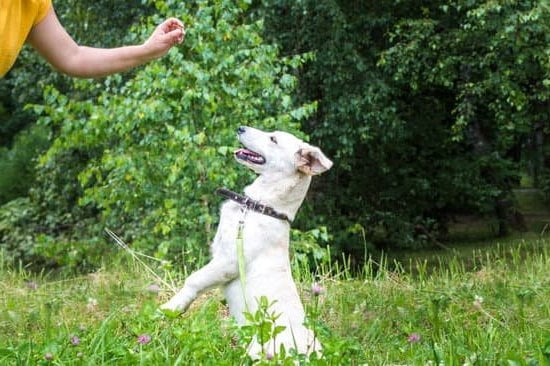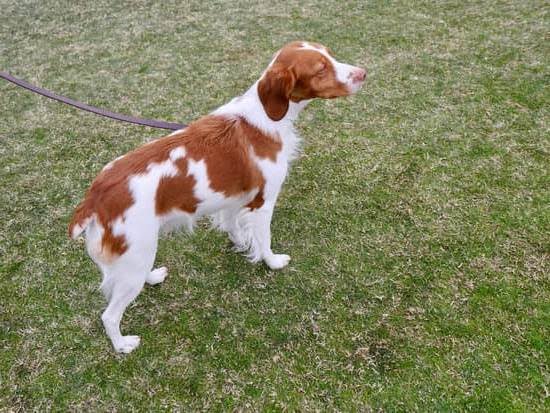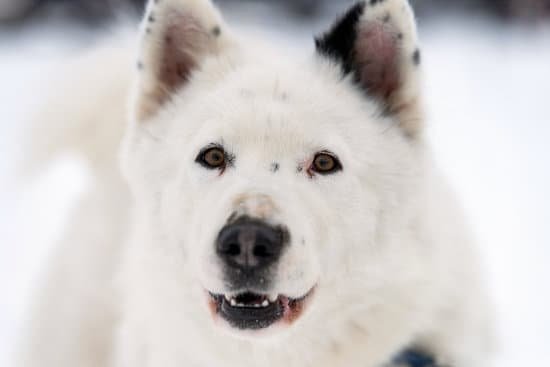Is your furry friend struggling with anxiety when it comes to going for a walk? Training an anxious dog to walk can be a challenging but ultimately rewarding experience. Understanding the signs and causes of anxiety in dogs is crucial before embarking on the training process. In this article, we will explore effective techniques and strategies to help your anxious dog feel more comfortable and confident during walks.
Anxiety in dogs can manifest in various ways, from pacing and panting to trembling and avoidance behaviors. It is important to recognize these signs in order to address them effectively. Possible causes of anxiety in dogs range from past traumatic experiences to lack of socialization or genetic predispositions. Addressing your dog’s anxiety before beginning training is essential for their overall well-being and success in the training process.
Creating a safe and calm walking environment for your anxious dog is key to their comfort and progress. Avoiding potential triggers such as loud noises or crowded areas during training can make a significant difference. Consistency and routine play a crucial role in setting the right environment for your dog, fostering a sense of security and predictability.
Setting the Right Environment
Creating a safe and calm walking environment for your anxious dog is crucial in helping them overcome their fears and anxieties. Here are some steps on how to train an anxious dog to walk by setting the right environment:
- Remove potential triggers: Identify any triggers that may cause anxiety or fear in your dog, such as loud noises, other dogs, or crowded areas. Avoid these triggers during training sessions to create a peaceful and stress-free environment for your dog.
- Establish a routine: Dogs thrive on routine and consistency. Set specific times for walks and stick to them every day. This predictability can help reduce your dog’s anxiety about going outside.
- Create a safe space: Provide your dog with a comfortable harness or leash that they feel secure in. This can give them a sense of protection and safety while outside.
By setting the right environment for your anxious dog, you can help create a positive association with walking and reduce their overall anxiety levels.
It’s important to remember that patience and understanding are key when training an anxious dog to walk. Always approach training sessions with empathy and give your dog the time they need to adjust to new environments. In addition, consistency in creating a safe and calm walking environment is essential for long-term success.
Remember, every small step forward is a victory in itself when it comes to training an anxious dog to walk. Be patient, celebrate progress, and seek support from professionals if needed. With the right environment and approach, your anxious dog can learn to enjoy their walks once again.
Positive Reinforcement Training Techniques
Using Treats and Rewards to Encourage Desired Behavior
One of the most effective ways to train an anxious dog to walk is through positive reinforcement techniques. This involves using treats, toys, or other rewards to encourage and reinforce good behavior during walks. When your dog exhibits calm and confident behavior, be sure to reward them with their favorite treat or toy. This will help create a positive association with walking and reduce their anxiety over time.
The Power of Praise and Encouragement During Training
In addition to using treats and rewards, the power of praise and encouragement should not be underestimated. Verbal cues such as “good job” or “well done” can go a long way in boosting your dog’s confidence during walks. Use an upbeat tone of voice and offer plenty of affection to show your anxious dog that they are doing a great job.
Avoiding Punishment and Negative Reinforcement
It’s important to note that punishing or using negative reinforcement techniques with an anxious dog can do more harm than good. Yelling, scolding, or using physical force can increase their anxiety levels and make the training process more difficult. Instead, focus on rewarding positive behavior and redirecting attention away from triggers in a gentle and supportive manner.
Overall, training an anxious dog to walk requires patience, consistency, and the use of positive reinforcement techniques. By incorporating treats, praise, and avoidance of punishment into your training regimen, you can help your anxious dog build confidence and overcome their fear of walking. Remember that each dog is unique, so it may take some trial and error to find the right approach for your furry friend.
Gradual Desensitization
When it comes to training an anxious dog to walk, one of the most effective techniques is gradual desensitization. This method involves introducing your dog to the outside world in small, manageable steps, allowing them to acclimate at their own pace. By slowly increasing the duration and distance of walks, you can help your dog build confidence and reduce their anxiety over time.
To implement gradual desensitization effectively, consider the following strategies:
- Start in a familiar and low-stress environment such as your backyard or a quiet park with minimal distractions.
- Gradually introduce new elements such as different walking routes, noises, and other people or animals in a controlled manner.
- Use positive reinforcement techniques such as treats and praise to reward your dog for calm and confident behavior during each step of the desensitization process.
Remember that patience and understanding are crucial during this process. It’s important not to rush your dog or push them beyond their comfort zone, as this can lead to setbacks in their progress. By taking things slow and allowing your dog to adjust at their own pace, you can help them overcome their anxiety and develop a positive association with walking.
By consistently practicing gradual desensitization, you can gradually expand your dog’s comfort zone and increase their confidence in new environments. While it may take time and dedication, the results can be incredibly rewarding for both you and your furry companion.
Utilizing Calming Aids
The Use of Calming Aids
When it comes to training an anxious dog to walk, sometimes utilizing calming aids can be beneficial in helping your dog feel more relaxed and at ease. One option to consider is the use of calming pheromone diffusers or sprays. These products release synthetic pheromones that mimic the natural ones dogs produce, promoting a sense of calm and security.
Additionally, there are natural calming remedies such as chamomile or lavender, which can be used in the form of essential oils or herbal supplements to help alleviate stress and anxiety in dogs. Another option to explore is the use of anxiety wraps or vests, which apply gentle, constant pressure to your dog’s body, similar to swaddling a baby, providing a comforting sensation for anxious dogs.
Considerations and Precautions
It’s important to note that while calming aids can be helpful for some anxious dogs, they may not work for every individual. It’s essential to consult with a veterinarian before using any calming aids to ensure they are safe and appropriate for your dog. Additionally, it’s crucial to follow the instructions provided by the manufacturer and use these aids in conjunction with positive reinforcement training techniques rather than relying solely on them as a solution.
Integrating Calming Aids Into Training
When incorporating calming aids into your training regimen, it’s essential to observe how your dog responds and make adjustments accordingly. While these aids can provide temporary relief during walks, they should ideally be used as a supportive tool alongside behavior modification techniques and professional guidance. By integrating calming aids into the overall approach for addressing your dog’s anxiety during walks, you can create a more balanced and comprehensive strategy for helping your anxious dog thrive.
Seek Professional Help
When it comes to training an anxious dog to walk, seeking the help of a professional dog trainer or behaviorist can make a significant difference in the outcome. Professional trainers have the experience and expertise to assess your dog’s specific anxiety triggers and develop a tailored training plan to address them. They can provide invaluable guidance on how to desensitize your dog to their anxiety-inducing triggers and use positive reinforcement techniques to build their confidence during walks.
A professional trainer can also offer support and reassurance for dog owners who may be feeling overwhelmed or frustrated by their pet’s anxious behavior. They can provide useful tips and advice on how to manage expectations, handle setbacks, and celebrate small victories during the training process. Additionally, they will be able to educate owners on the importance of consistency and patience when working with anxious dogs, emphasizing that progress may take time but is achievable with dedication.
Finding a trainer experienced in working with anxious dogs is crucial for ensuring the success of your dog’s training journey. Look for professionals who have a background in canine behavior, particularly anxiety-related issues. It’s important to find someone who uses force-free, positive reinforcement training methods and has a compassionate approach towards managing anxious behaviors in dogs.
| Benefits | Importance |
|---|---|
| Assessment of specific anxiety triggers | Identifying areas of focus for desensitization |
| Professional guidance | Tailored training plan for the anxious dog |
| Social support for owners | Emotional assistance during difficult moments |
(Data is illustrative).
Management and Support
Implementing management strategies to support your anxious dog during walks is crucial in their training journey. Understanding your dog’s limitations and adjusting your expectations will help create a positive experience for both you and your pet. It’s important to be patient and provide the necessary support as your dog works through their anxiety.
One way to manage and support an anxious dog during walks is by using a front-clip harness or head halter, which can provide more control and reduce pulling, making the walk more comfortable for your pet. Additionally, choosing quiet and less crowded walking areas can help minimize triggers that may cause anxiety in your dog. Creating a safe and calm environment is essential to help them feel secure during their training.
It’s also essential to build a support network for yourself and your anxious dog. Seeking advice from other pet owners who have successfully trained anxious dogs to walk can offer valuable insights and encouragement. Additionally, joining a local or online community of dog owners can provide you with emotional support as you navigate this process.
| Management Strategies | Support Strategies |
|---|---|
| Use of front-clip harness or head halter | Building a support network with other pet owners |
| Choosing quiet walking areas | Joining local or online communities of dog owners |
Consistency and Patience
In conclusion, training an anxious dog to walk requires a combination of understanding, patience, and consistency. It’s essential to recognize the signs of anxiety in dogs and understand the possible causes before beginning any training program. By creating a safe and calm environment for your dog and avoiding potential triggers, you can set the stage for successful training sessions. Positive reinforcement techniques, such as using treats and praise, can help encourage desired behavior while avoiding punishment and negative reinforcement.
One crucial aspect of training an anxious dog to walk is gradual desensitization to the outside world. This involves introducing your dog to new stimuli in small steps and slowly increasing the duration and distance of walks.
Additionally, considering the use of calming aids such as pheromone diffusers or natural remedies may help ease your dog’s anxiety during walks. Seeking professional help from a trainer experienced in working with anxious dogs can also provide valuable guidance and support throughout the training process.
It’s important for dog owners to remember that consistency and patience are key when training an anxious dog to walk. Celebrating small victories and progress, while managing frustrations and setbacks with understanding, can make a significant difference in your dog’s training journey.
By implementing management strategies and building a support network for both yourself and your anxious dog, you can work towards making walks a positive experience for everyone involved. With dedication and the right approach, it is possible to successfully train an anxious dog to walk confidently.
Frequently Asked Questions
How Do I Stop My Dog From Being Anxious on Walks?
To stop your dog from being anxious on walks, start by identifying the source of their anxiety. It could be other dogs, unfamiliar surroundings, or loud noises. Gradually expose them to these triggers while offering positive reinforcement to build their confidence.
How Do You Train a Fearful Dog to Walk on a Leash?
Training a fearful dog to walk on a leash requires patience and positive reinforcement. Start in a quiet, familiar environment and gradually introduce the leash. Use treats and praise to encourage them to move forward. Over time, increase the level of distraction while continuing to reinforce calm behavior.
Why Is My Scared Dog Not Walking?
There are several reasons why a scared dog may not be walking. It could be due to fear, past trauma, physical discomfort, or lack of socialization. It’s important to observe your dog’s body language and consult with a professional if the issue persists.

Welcome to the blog! I am a professional dog trainer and have been working with dogs for many years. In this blog, I will be discussing various topics related to dog training, including tips, tricks, and advice. I hope you find this information helpful and informative. Thanks for reading!





